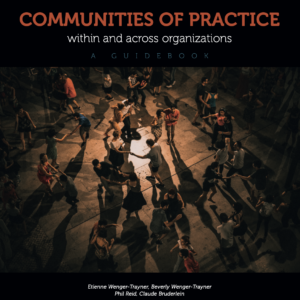NOTICE: There is an updated version of all these FAQs on our new website:
What should an organization put in place to cultivate communities of practice systematically?
If organizations are going to cultivate communities, in their midst or across their boundaries, they have a responsibility to create a context in which these communities can thrive. Large numbers of communities of practice today live inside or across organizations that influence them in many ways. And most of the failures of these communities are at least in part due to a lack of organizational support or understanding. So the organizational side of the cultivating equation is a critical success factor. Organizations are only beginning to learn how to integrate communities of practice. The point is not to institutionalize them and shape them into the image of the formal organization, but to create “hooks” into formal systems for recognizing, engaging, and supporting them. One big lesson is that bureaucratic processes do not work well for this purpose. Leading organizations are learning that intelligence cannot be designed out of the process. Therefore the key principle is to use formal structures to create spaces, processes, and opportunities for intelligent conversations. Examples include:- Leveraging hierarchical positions to discuss the strategic importance of learning and the role of communities of practice in enabling it
- Formalizing roles and relationships like community leadership and executive sponsorship to create opportunities to explore the strategic value of communities, their contributions, their perspectives, and their need for resources
- Tuning formal processes like performance appraisal so that individual contributions can be discussed and recognized meaningfully
- Establishing a dedicated support function to address the logistical, educational, and infrastructural needs of communities and help orchestrate the whole learning system and required strategic conversations.
| << Why should practitioners be involved? | Institutionalize communities of practice? >> |
For more information, click here:
For practical advice on cultivating communities of practice in and across organizations, see our new guidebook:
For workshops on cultivating communities of practice:
For a bit more info, see our general (but brief) introduction to communities of practice and their use in various contexts:


